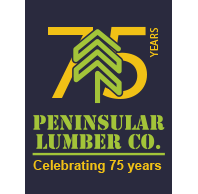What is the best lumber to use to build a deck?
Building a deck is an exciting project that can add value to your home and provide a wonderful outdoor space for relaxation and entertainment. However, choosing the best decking materials can be a daunting task, given the numerous options available.
This guide will help you understand the different types of decking materials, their pros and cons, and how to select the best lumber for decking to ensure your deck project is a success.
Understanding Decking Materials
When it comes to decking, there are several materials to choose from, each with its own advantages and disadvantages. Let’s explore the most popular types of decking materials to help you make an informed decision.
1. Pressure Treated Lumber
Pressure treated lumber is one of the most common materials used for decking. It is made from natural wood that has been chemically treated to resist rot, insects, and decay. This type of decking is popular due to its affordability and durability.
Pros:
- Affordable: One of the least expensive decking options.
- Durable: Resistant to rot and insect damage.
- Versatile: Easy to cut and shape for custom deck designs.
2. Cedar Decking
Cedar is a beautiful, natural wood that is known for its rich color and grain. It is a popular choice for those who prefer real wood decking.
Pros:
- Aesthetic Appeal: Offers a warm, natural look with a unique grain pattern.
- Natural Resistance: Naturally resistant to rot, decay, and insect damage.
- Long Term: Can last up to 20 years with proper care.
3. Composite Deck Materials
Composite decking is made from a mixture of wood fibers and plastic. This type of decking is designed to mimic the look of real wood without the high maintenance requirements.
Pros:
- Low Maintenance: Requires minimal upkeep compared to natural wood.
- Durable: Resistant to rot, insects, and UV damage.
- Variety: Available in a wide range of colors and textures.
4. Vinyl Decking
Vinyl decking, also known as PVC decking, is a synthetic material that offers excellent durability and low maintenance.
Pros:
- Maintenance-Free: Does not require sealing, staining, or painting.
- Durable: Resistant to moisture, rot, and insects.
- Consistent Appearance: Does not fade or splinter over time.
5. Aluminum Decking
Aluminum decking is a unique option that offers unmatched durability and longevity.
Pros:
- Durability: Extremely durable and resistant to weather, insects, and decay.
- Lightweight: Easy to install and handle.
- Low Maintenance: Does not require sealing, staining, or painting.
Factors to Consider When Choosing Decking Materials
When deciding on the best decking materials for your project, consider the following factors:
1. Budget
Your budget will play a significant role in determining the type of decking material you can afford. Pressure treated lumber and cedar are generally more affordable, while composite, vinyl, and aluminum are more expensive.
2. Maintenance
Consider how much time and effort you are willing to invest in maintaining your deck. Natural wood options like cedar and pressure treated lumber require regular maintenance, while composite, vinyl, and aluminum decking require less upkeep.
3. Aesthetic Preferences
Think about the look and feel you want for your deck. Real wood offers a warm, natural appearance, while synthetic materials like composite and vinyl offer a more uniform look.
4. Durability
Consider the climate and environmental conditions in your area. Materials like aluminum and composites are highly durable and can withstand harsh weather conditions, while natural wood may require more protection and maintenance.
5. Environmental Impact
If you are concerned about the environmental impact of your decking materials, consider options like composite decking made from recycled materials or sustainably sourced wood.
How to Build a Deck: Step-by-Step Guide
Building a deck can be a rewarding DIY project if you have the right tools and knowledge. Here is a basic step-by-step guide to help you get started:
Planning and Design
- Determine the Size and Layout: Measure the area where you plan to build your deck and decide on the size and layout.
- Check Local Codes: Ensure your deck design complies with local building codes and regulations.
- Choose Your Materials: Decide on the best decking materials based on your budget, maintenance preferences, and aesthetic goals.
Preparing the Site
- Clear the Area: Remove any grass, plants, or debris from the construction site.
- Level the Ground: Ensure the ground is level to provide a stable foundation for your deck.
Building the Frame
- Install Footings: Dig holes for the footings and fill them with concrete to provide a solid base.
- Build the Frame: Construct the deck frame using pressure treated lumber or other suitable materials.
Installing Deck Boards
- Lay the Deck Boards: Start laying the deck boards from one end of the deck frame, ensuring they are evenly spaced.
- Secure the Boards: Use appropriate screws or fasteners to secure the deck boards to the frame.
Finishing Touches
- Add Railings: Install railings for safety and aesthetic appeal.
- Seal and Stain: If using natural wood, apply a sealant and stain to protect the wood and enhance its appearance.
Pros and Cons of Different Decking Materials
To help you make a more informed decision, here is a summary of the pros and cons of the different decking materials:
Buying Lumber for Your Deck
When buying lumber for decking, it’s important to consider the quality and source of the wood. Here are some tips to help you make the best choice:
1. Choose Quality Lumber
- Select Grade: Choose a high-grade lumber that is free from knots and defects.
- Inspect for Damage: Check for any signs of damage, such as cracks or splits.
2. Consider Sustainability
- Certified Wood: Look for lumber that is certified by organizations like the Forest Stewardship Council (FSC) to ensure it comes from sustainable sources.
- Recycled Materials: Consider composite decking materials made from recycled wood and plastic.
3. Proper Storage and Handling
- Store Properly: Store your lumber in a dry, covered area to prevent warping and damage.
- Handle with Care: Avoid dropping or mishandling the lumber to maintain its quality.
Conclusion: Learn More About Decking Materials
Choosing the best decking materials is a crucial step in building a deck that is beautiful, durable, and easy to maintain. Whether you prefer the natural look of real wood or the low maintenance of composite or vinyl decking, there are plenty of options to suit your needs and budget. By considering the pros and cons of each material, planning your deck project carefully, and buying quality lumber, you can create a deck that will provide enjoyment for many years to come.
We offer a wide range of decking materials and are here to help you make the best choice for your home.



